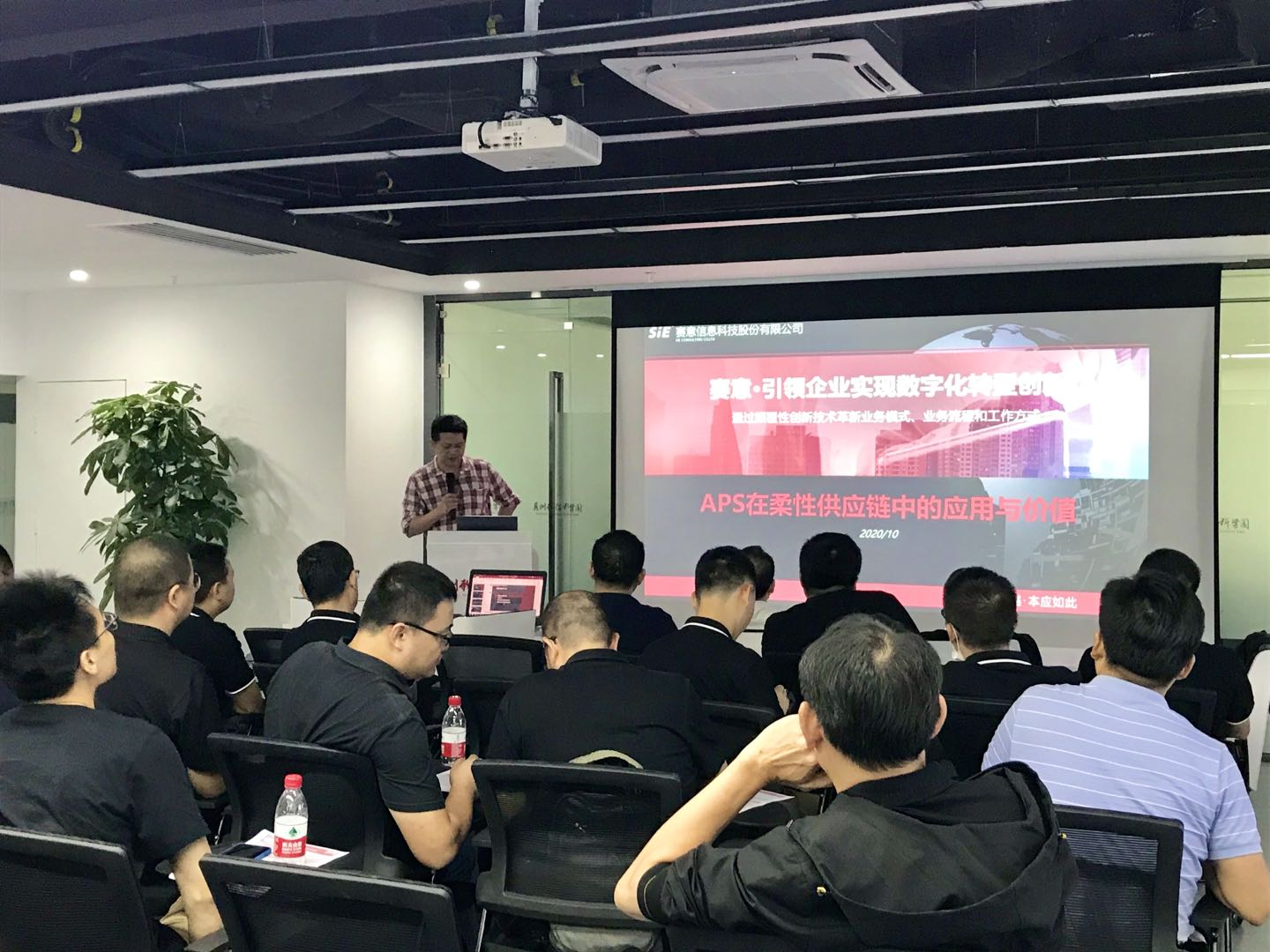On October 17th, the offline salon on "How to Build a Flexible Supply Chain SCM System" organized by the Huizhou CIO Association was held in Huizhou. SiE Information was invited to participate in this salon, sharing the application and value of SAPS in flexible supply chains with on-site guests, enterprise representatives, and conducting academic exchanges with the guests.

The "internal and external uncertainties" in the survival environment of enterprises continue to increase
The overall trend of modern business changes is that consumers' demand for goods or services is becoming increasingly personalized, the market's sensitivity to time is increasing, the speed of product updates is also increasing, market competition is becoming increasingly fierce, and uncertainty has become an important feature of the modern business environment.
External uncertain factors mainly include shortened market cycles, rapid fluctuations in demand, and mass customization; Internal uncertain factors mainly include deviation from demand forecasts, insufficient or excessive supply, low efficiency, multiple defective products, and channel pressure. Therefore, using information technology to establish a flexible supply chain to adapt to the ever-changing market demand is a necessary path for enterprises.
What is SAPS
The SAPS (Sie Advanced Planning and Scheduling) SiE Information Advanced Planning and Scheduling Optimization System was initially used to perform planning calculations and optimization within a factory, and later expanded to include the needs of suppliers, distributors, and shipping points in supply chain planning.
SiE Information SAPS is a high-level supply chain planning system. In the process of enterprise transformation from a single company to a group company, the cooperation of multiple regions, factories, departments, countries, and upstream and downstream supply chains has led to the transformation of the relatively loose supply chain structure into a tight supply chain network alliance.

The main target industry of SAPS is the manufacturing industry with discrete processing methods.
Enterprises that adopt discrete manufacturing methods tend to obtain orders in the market that are mainly multi variety, small batch, and customized, and often experience order insertion or adjustment; The material procurement plan is disconnected from the production plan execution, resulting in low supplier coordination, delayed delivery, or abnormal quality of incoming materials; The low utilization rate of workshop equipment, long mold changing time, frequent mold changing, and other troubles. If discrete enterprises need to achieve synergy between production capacity planning and material planning, quickly respond to market changes, and improve equipment utilization, the SAPS system is suitable for production plan management in such enterprises.
SAPS's Five Values Realize Efficient Management of Flexible Supply Chain
1. Improve accuracy
The SAPS advanced plan fully considers the limited capacity constraints of equipment, material constraints, and inventory and procurement situations, so it can obtain production and material plans that are more refined and executable than MRP's unlimited capacity scheduling, achieving accurate evalsuation, reserved buffer, capacity simulation and adjustment, guiding material procurement, delivery commitment, manufacturing and procurement, and supply coordination.
2. Reduce production costs
SAPS advanced scheduling can support different optimization scheduling methods, such as process integration for production, reducing switching, and achieving resource optimization and reducing production costs.
3. Improve the line body ability
Multiple scheduling optimization rules can be set to meet different production requirements. Prioritize resource efficiency, resource utilization, and reverse scheduling thresholds based on order priority. Reasonably allocate molds and personnel as needed to accurately calculate machine capabilities.
4. Reduce the workload of tracking personnel
SAPS provides a fast simulation scheduling function based on the actual production capacity and material inventory of the factory. It can quickly simulate the scheduling of intended or sales orders, and respond to customer orders with reasonable delivery dates based on the simulation scheduling results, improving delivery accuracy and customer satisfaction. Compared with traditional prediction methods, SAPS can significantly improve prediction accuracy and the work efficiency of planners, reducing unnecessary personnel operations.
5. Improve equipment utilization rate
By utilizing a more efficient and visual scheduling system, production anomalies can be detected and handled in a timely manner, effectively improving capacity utilization and equipment utilization.
6. Improve the efficiency of planned operations
Using high-speed memory computing services, the scheduling impact time is increased to the second level, and information is pulled through to provide quick response tools. In addition, the visualization task operation area and detailed information, as well as the related plan list, are interconnected, allowing users to focus on the plan, respond quickly, and adjust the plan.
Based on market development trends, it is a challenge that every enterprise needs to overcome to reasonably arrange production and improve efficiency while meeting the personalized needs of customers' products and services. Utilizing SiE Information SAPS system to build a flexible supply chain system, enabling enterprises to meet market demand while reducing production costs. At present, SiE Information SAPS has served dozens of globally renowned enterprises such as Dongpeng Ceramics, Delta Electric Appliances, and Nanyang Explosion Protection, providing customers with efficient computing, reasonable production scheduling, and other intelligent manufacturing methods, forming a more efficient production management model.








